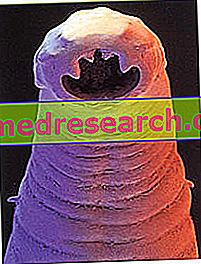Related articles: Ebola
Definition
Ebola is a severe form of hemorrhagic fever, often fatal, caused by extremely aggressive filoviruses. The disease occurs mainly in the regions of central Africa, where several epidemic outbreaks have occurred sporadically. For the high potential of contagiousness, the Ebola viruses (to date, five subtypes have been isolated, of which three are very pathogenic for humans) are classified by the World Health Organization among the pathogens that require the highest level of Biosafety. The infection of a single individual in a community determines the spread of the disease very quickly. Ebola has lethality rates ranging from 50% to 90%, based on the viral strain involved. The origin of the virus is unknown, although fruit bats are considered the probable intermediate hosts or reservoirs of the Ebola virus. In risk areas, it is important to reduce the handling or food consumption of infected, living or dead animals (especially monkeys, gorillas, chimpanzees, antelopes and porcupines). Person-to-person transmission occurs through direct contact with blood, secretions, tissues or infected body fluids (sweat, faeces, urine, saliva, genital secretions and sperm). The infection can also occur through exposure to objects contaminated with infected body fluids (eg clothes, underwear or needles used by a sick patient).
Ebola virus infections are characterized by the suppression of the immune system and a systemic inflammatory response that causes vascular weakening and coagulation abnormalities. In particular, a diffuse microcoagulation is determined with reduction of the trophism and the spraying of various organs, which involves a multi-organ failure.
Most common symptoms and signs *
- Asthenia
- Chills
- Cachexia
- Conjunctivitis
- Convulsions
- Diarrhea
- Dysphagia
- Dehydration
- Abdominal pain
- Chest pain
- Articolar pains
- Muscle pains
- Bruising
- Hematemesis
- hemoptysis
- Gastrointestinal hemorrhage
- Hemoptysis
- Hepatitis
- Hepatomegaly
- Rash
- Ease of bleeding and bruising
- Pharyngitis
- Temperature
- Fotofobia
- Hypotension
- Hypovolemia
- Jaundice
- Swollen lymph nodes
- macules
- Sore throat
- Headache
- Melena
- Nausea
- Eyes reddened
- oliguria
- papules
- Paresthesia
- Weight loss
- petechiae
- Proteinuria
- Nosebleeds
- Blood from the ear
- Blood in the stool
- Blood in the urine
- Vaginal bleeding
- Bleeding gums
- Intraocular bleeding
- Hiccup
- splenomegaly
- Tachycardia
- tachypnoea
- Cough
- lockjaw
- Skin Ulcers
- Dizziness
- He retched
Further indications
Infection with Ebola virus causes a complex series of signs and symptoms, rapidly aggravating, due to the complex of viral haemorrhagic fevers. The time interval from infection to onset of symptoms is, on average, eight days (2-21 days). After this incubation period, ebola manifests as a flu-like syndrome characterized by fever, myalgia, arthralgia, headache and intense weakness. In the following 3-4 days appear conjunctivitis, macular rash (mainly in the trunk), gastrointestinal symptoms (dysphagia, nausea, vomiting, abdominal pain and profuse diarrhea) and upper respiratory tract (cough, pharyngitis and chest pain). An apparent remission phase follows, in which the general conditions seem to improve and the fever disappears. The terminal phase is characterized by hemorrhagic manifestations: the epidermis presents petechiae, ecchymoses and extended maculo-papular exanthema. Also appear bleeding gums, epistaxis, hematemesis, melena, hemoptysis and genital haemorrhages. The onset of agitation, convulsions, paresthesia and other neurological signs indicates an involvement of the central nervous system. Unstoppable hiccups, jaundice, trismus, hepatomegaly, splenomegaly, lymphadenopathy and complications such as recurrent hepatitis, uveitis, orchitis, pancreatitis, mumps, renal and hepatic failure may also occur.
Infection with Ebola virus should be suspected in patients with a history of travel to endemic areas, predisposition to bleeding and fever. Blood counts, routine blood tests, liver function tests, coagulation tests and urinalysis should then be performed. Diagnostic tests include serological methods for the determination of IgM or IgG antibodies (ELISA) and PCR for the detection of viral genetic material. The diagnosis is confirmed with the identification of the characteristic virions by electron microscopy of infected tissue or on the blood.
There is no effective antiviral treatment, so the treatment is symptomatic and supportive. For patients who survive, recovery is slow and can take several months. Currently, a vaccine is under development. To contain the epidemic spread, hospital isolation and quarantine measures are required.



